When it comes to 4K gaming consoles, there are two standout options: the PS5 and the Xbox Series X. Being the flagship consoles of the latest generation, they share a lot of similarities. But there are also some key differences that you should be aware of before committing yourself to a purchase.
We’ve reviewed both consoles, and have been continuously testing them since they first launched in 2020. This puts us in a good place to determine the best option for your specific needs, whether you’re looking for the most powerful hardware or the best game library.
We’ve also made sure to test the new PS5 Slim model that has become the default option since 2023, while we’re also keeping the rumoured mid-cycle refreshes in mind, with the PS5 Pro tipped for a 2024 release.
Keep reading to find out how the PS5 and Xbox Series X differ in terms of pricing, specifications, software, games and more, so you can decide if you prefer Sony or Microsoft.
Price
In 2023, Sony replaced the original PS5 with a new Slim model. This is priced at £480/€550/$499 for the model with a detachable disk drive, while the Digital Edition is available for just £390/€450/$449.
Meanwhile, the Xbox Series X is priced at £449/€499/$499, which has stayed the same since the 2020 launch. Xbox is yet to launch a revised version of the hardware, although a mid-cycle refresh is expected towards the end of 2024.
We’ve noticed that both the PS5 and Xbox Series X have been available to buy with discounts and bundles in recent years, especially during major sales such as Black Friday.
Design
Sony refreshed the original PS5 with a new PS5 Slim model, which is now the default option. It’s still using the same glossy white-and-black design, but it’s now 30% smaller and weighs just 3.2kg.
These tweaks have made the new PS5 significantly easier to fit underneath your TV, and looks better for it. Sony is offering up two different models, one with a disk drive and one without. Fortunately, with the Slim model, you’re now able to purchase the disk drive separately and attach it to the console yourself. This previously wasn’t possible with the original machines.
Sony also allows you to snap off the face plates, and add your own. There are now a variety of colours available, allowing you to add a bit more personalisation to the console.
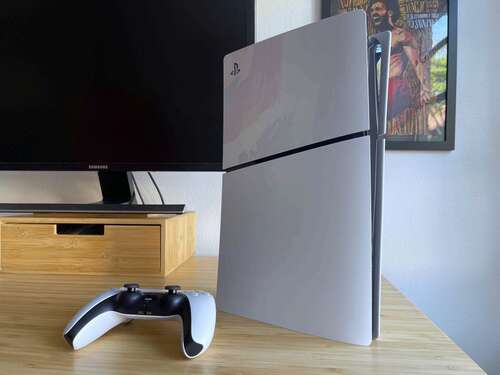
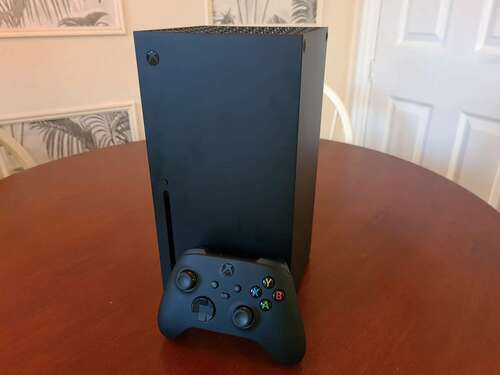
Microsoft hasn’t altered the Xbox Series X since launch. It’s a big cuboid, which looks similar to a PC tower. It’s a little heavier than the PS5 Slim with a weight of 4.4kg. It’s arguable that the Series X is a little less aesthetically pleasing, more like a box speaker than a console. You can at least lay it vertically or horizontally without the need of a stand.
Both consoles offer a very similar port selection of HDMI, USB-C and Ethernet ports available.
Specs
Each of these consoles offers an incredible amount of power to ensure users will have a good few years of use in terms of performance power and technical capabilities.
For a more in-depth look at how the consoles compare, check out the specs breakdown below:
| Xbox Series X | PS5 | |
| CPU | 8x Cores @ 3.8 GHz (3.66 GHz w/ SMT) Custom Zen 2 CPU | 8x Cores @ 3.8 GHz (3.66 GHz w/ SMT) Custom Zen 2 CPU |
| GPU | 12 TFLOPS, 52 CUs @ 1.825 GHz Custom RDNA 2 GPU | 10.28 TFLOPs, 36CUs @ 2.23GHz |
| Memory | 16 GB GDDR6 w/ 320mb bus | 16 GB GDDR6/ 256-bit |
| Memory Bandwidth | 10 GB @ 560 GB/s, 6 GB @ 336 GB/s | 448GB/s |
| Internal Storage | 1 TB SSD | 1 TB SSD |
| I/O throughput | 2.4 GB/s (Raw), 4.8 GB/s (Compressed, with custom hardware decompression block) | 5.5 GB/s (Raw), Typical 8-9 GB/s (Compressed) |
| Expandable Storage | 1 TB Expansion Card (matches internal storage exactly) | NVMe SSD Slot |
| External Storage | USB 3.2 External HDD Support | USB HDD Support |
| Optical Drive | 4K UHD Blu-ray Drive | 4K UHD Blu-ray Drive |
| Performance Target | 4K @ 60 FPS, Up to 120 FPS | 4K @ 60 FPS, Up to 120 FPS |
The consoles only really differ in terms of GPU and internal storage. However, Sony allows you to upgrade the storage via an M.2 SSD. You can find out which SSDs work with the PS5 in this guide, while we’ve also created a guide to show how to install an SSD inside a PS5. Microsoft instead supports official licensed memory cards, which are easier to install but can be pretty expensive.
In terms of the GPU, Microsoft wins by having more teraflops, but the difference is subtle enough that most players likely won’t notice, and it’s in no way a game-changer when comparing the two. Teraflops aren’t the best metric of performance, more of a metric for how potentially powerful the console could be.
Controllers
Sony has upped its game with the PS5 DualSense controller, which features haptic feedback. In our review, we noted this makes the controller feel very balanced and satisfying to use, the haptic upgrades and adaptive triggers help to transform supported games into more immersive experiences.
The company also revealed another addition to the DualSense family with the DualSense Edge Wireless controller. This controller will allow users to remap specific button inputs, replace stick modules with other designs, swap out stick caps and switch up the back buttons, making it one of the most customisable controllers on the market.
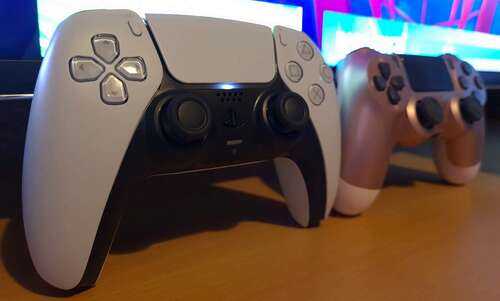
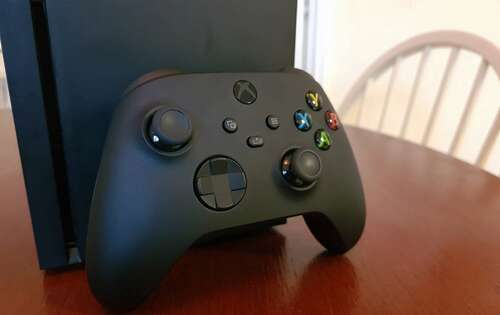
The Xbox Series X controller does not have as much impact as the Sony alternative, featuring the same design as the pad bundled with the Xbox One. While there is not the same level of haptic feedback or customisable features, it feels as comfortable and easy to use as the controller that came before it.
Features and upgrades
Each console has been on the market for upwards of two years, so it’s not too surprising that both Sony and Microsoft have upgraded the features over their lifetime.
Sony has updated the PS5 console a couple of times. Voice chats are now known as Parties, and can be accessed via the new three-pronged Game Base menu.
Players can also pin five select titles to the screen permanently, which will stay in place regardless of what games are played or downloaded. In a previous update, Sony altered the PS5 firmware to allow users to add another SSD to the previously dormant expansion slot, meaning that the console’s overall SSD storage has been increased.
Specific games have had their own upgrades; Horizon Zero Dawn can now be played at 60fps with graphics at their maximum setting, while some upgrades have improved the overall performance. The introduction of VRR (Variable Refresh Rate) also minimised issues such as visual artefacts and screen tearing.
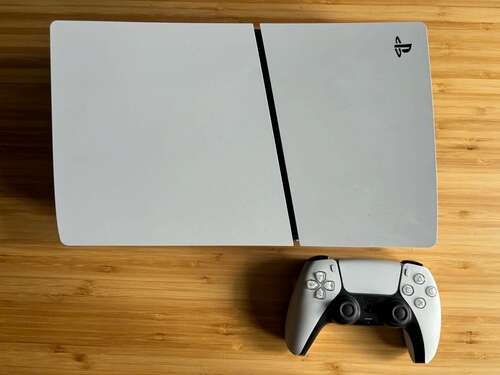
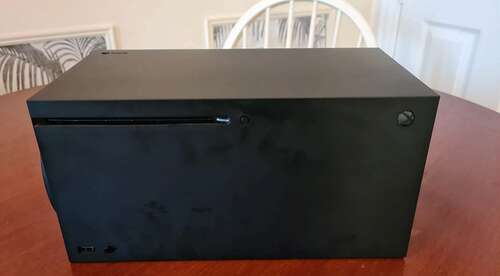
Microsoft, meanwhile, launched the Xbox Series X with the Quick Resume feature that allows players to swap between active states of up to six different games at once. This offers players the means to jump into a game without waiting for the title to load, a feature the PS5 currently does not have.
In terms of upgrades, the Xbox Series X has improved its UI, upgrading it from 1080p to 4K resolution when connected to a 4K display, making scrolling the Home screen more visually satisfying.
Another upgrade that was bought in the Xbox Night Mode, which adjusts the brightness to keep the room dark and assist players sensitive to light. You can also toggle and adjust the light from your connected display, which is not ground-breaking, but a nice add-on in our experience.
Moreover, Microsoft plans on furthering its customisation options in the Xbox Home UI, with options for users to customise the layout with games, Pins and backgrounds.
Exclusive games
Arguably the biggest decider in picking a new console is the games selection that comes with it. While many games can be found on multiple platforms, some games are exclusives, meaning that if you want in on the action, you need to have the appropriate hardware.
The PS5 has a fair selection of exclusives, including God of War Ragnarök, Ratchet and Clank: Rift Apart, Returnal, Horizon Forbidden West and Marvel’s Spider-Man 2. The PS5 has been criticised for sharing many of its exclusives with the PS4, and therefore limiting the technological potential, but Sony has since started to launch PS5-only games.


In comparison, Micros’s current exclusive offering looks pretty slim, with Halo Infinite, Forza Horizon 5 and Starfield being some of the only high profile launches. Xbox has promised more exclusives such as Fable, Avowed and more. All of Xbox’s exclusives will be available though the Game Pass, a monthly subscription service, too.
Both consoles also offer backwards compatibility with previous generation consoles, so it’s worth checking both libraries to see which takes your fancy the most.
Verdict
All-in-all, both the PS5 and Xbox Series X are impressive and powerful consoles that have built upon the hardware that came before them to create new and improved gaming experiences.
While Sony beats out Microsoft with its incredible DualSense haptic feedback controllers, the Xbox Game Pass subscription makes the Series X a cost-effective option in the long run, as you won’t need to shell out $70/£60 for new exclusives like you do with the PS5.
If you’re more interested in cloud gaming and getting a nostalgia fix from older games, you are better off with the Xbox Series X, as Microsoft has been working hard to expand its Games Library. However, if you’re already invested with the PlayStation ecosystem, and are eager to play the next entries of Spider-Man, God of War, The Last of Us, Horizon and more, then the PS5 is your best bet.
While the consoles edge each other out in certain areas, we think that you will have a blast on either console thanks to the powerful specs. Decide on the games you’re most interested in and you can figure it out from there.

